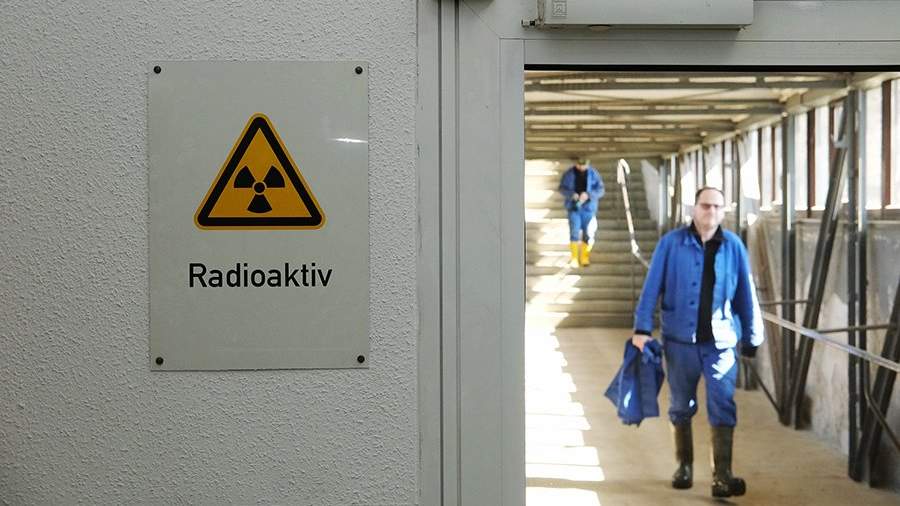
EU unhappy at having to buy Russian uranium due lack of alternatives
The price of the enriched uranium sold by Russia to EU countries has increased by 2.5 times. In 2021, the price per kilogram which was €678, rose to €1163 in 2022 and further t increased to €1713 by the end of 2023. This is close to the 2013 figure when a kilogram of uranium cost €2,004.So will the price of uranium will continue to rise and what this could mean for Russians and the EU countries.
In 2023, EU countries imported 253 tons of uranium,in terms of the overall structure, 19% of the purchases were supplies from Russia. Great Britain purchased the largest share of Russian enriched uranium imported to the EU, accounting for 28% of the total volume, while the Netherlands accounted for 20%. Russia earned €678 million and €263 million, selling 365 tons and 263 tons, respectively.
Although Russia also supplied depleted uranium to Europe, the volumes were small, amounting to only about 1 ton for €54 thousand. In 2023, EU countries purchased natural uranium from Canada, France, Kazakhstan, the Netherlands, and Niger, totaling 24,000 tons worth €3.2 billion. It is worth noting the trend of purchases within the EU. Internal trade turnover within the EU reached €1.9 billion and 13.5 thousand tons.
Finding an alternative
The increase in uranium prices since the start of 2021 is a result of many countries renewing their interest in nuclear power as an alternative to conventional fossil fuels. Over the course of two years, the price of uranium tripled, reaching over $100 per pound in early 2024.
Russia possesses around 8% of the world's uranium reserves and accounts for approximately 6% of global production. Additionally, more than 40% of the world's enrichment capacity is concentrated in Russia. Furthermore, Russia supplies 20% of the world's nuclear fuel to the market. According to calculations by Finam analysts, uranium prices have reached levels similar to those in 2007 when many countries were actively planning the development of nuclear energy.
The International Atomic Energy Agency predicts that the world's demand for uranium will exceed 100,000 tons per year by 2040. This will necessitate a doubling of current mining and processing volumes.
Due to the geopolitical situation, Western countries are actively seeking alternative sources of uranium supplies. The United States is one of the obvious contenders. American uranium companies' actions indirectly indicate preparations for the redistribution of the uranium market. Thus, uranium fuel producers are reopening closed uranium mines in the states of Wyoming, Arizona, Texas and Utah, according to information recently released by Bloomberg.
Olga Orlova, head of the 'Industry' department at the Institute of Oil and Gas Technologies, suggests that the Americans may be preparing to introduce anti-Russian sanctions that will make it difficult to sell uranium to Western countries, or they are trying to make money on the emerging uranium rush.
In addition to the impact of anti-Russian sanctions, other geopolitical factors also affect the pricing of uranium fuel. Specifically, the military coup in Niger and the sudden departure of the French mining company Orano have contributed to the current situation.
It is worth noting that sanctions on other sectors of the economy have not prevented the EU from doubling its uranium imports from Russia in 2023. For instance, uranium was bought for 19 reactors in the Czech Republic, Bulgaria, Hungary, and Finland, although the latter reduced import volumes.
Several EU countries are currently switching their uranium supplier. According to Maria Girich, an expert at the Russia-OECD Center at the Presidential Academy, the increase in purchases may be due to the formation of fuel reserves. This is to ensure a transition period in case sanctions are introduced or the supplier has to be changed.
Approximately 30 countries with nuclear energy production at around 440 stations import materials from Russia. Estimates from the Russia-OECD Center suggest that our country holds 50% of the uranium market. Therefore, the process of discontinuing the use of Russian uranium may be prolonged.
Maria Girich concluded that this gives Russia ample time to find buyers in the markets of friendly countries.
Of particular interest are the countries with which there are contracts for the construction and maintenance of nuclear power plants, such as Turkey, Egypt, Belarus, France, and Hungary. Currently, Rosatom specialists are building the fifth and sixth units of the Paks NPP in Hungary. This nuclear power plant generates up to 50% of the country's electricity. Hungary will continue to pay off the construction debt until 2046.
France is keen to maintain its cooperation with Russia in the nuclear energy sector. As part of this, French energy company EDF is supplying turbines for the power unit of the Paks nuclear power plant. These multi-billion dollar contracts are crucial for ensuring the energy independence of the entire country.
According to Ekaterina Kosareva, managing partner of the analytical agency 'VMT Consult', Germany will not create obstacles to nuclear energy, at least until a reliable alternative is available, which is not expected for several years.
Despite having abandoned nuclear energy, Germany still depends on it and imports electricity from French nuclear power plants. She believes that interruptions lead to a significant increase in electricity prices per kilowatt and cause shortages.
The interviewed experts agree that Russia should increase its uranium supplies to Asian countries, regardless of sanctions. This will ensure that the demand for Russian uranium is met even if existing partnerships fail. Additionally, cooperation with African countries that have steadily developing economies and no geopolitical upheavals is also promising.
